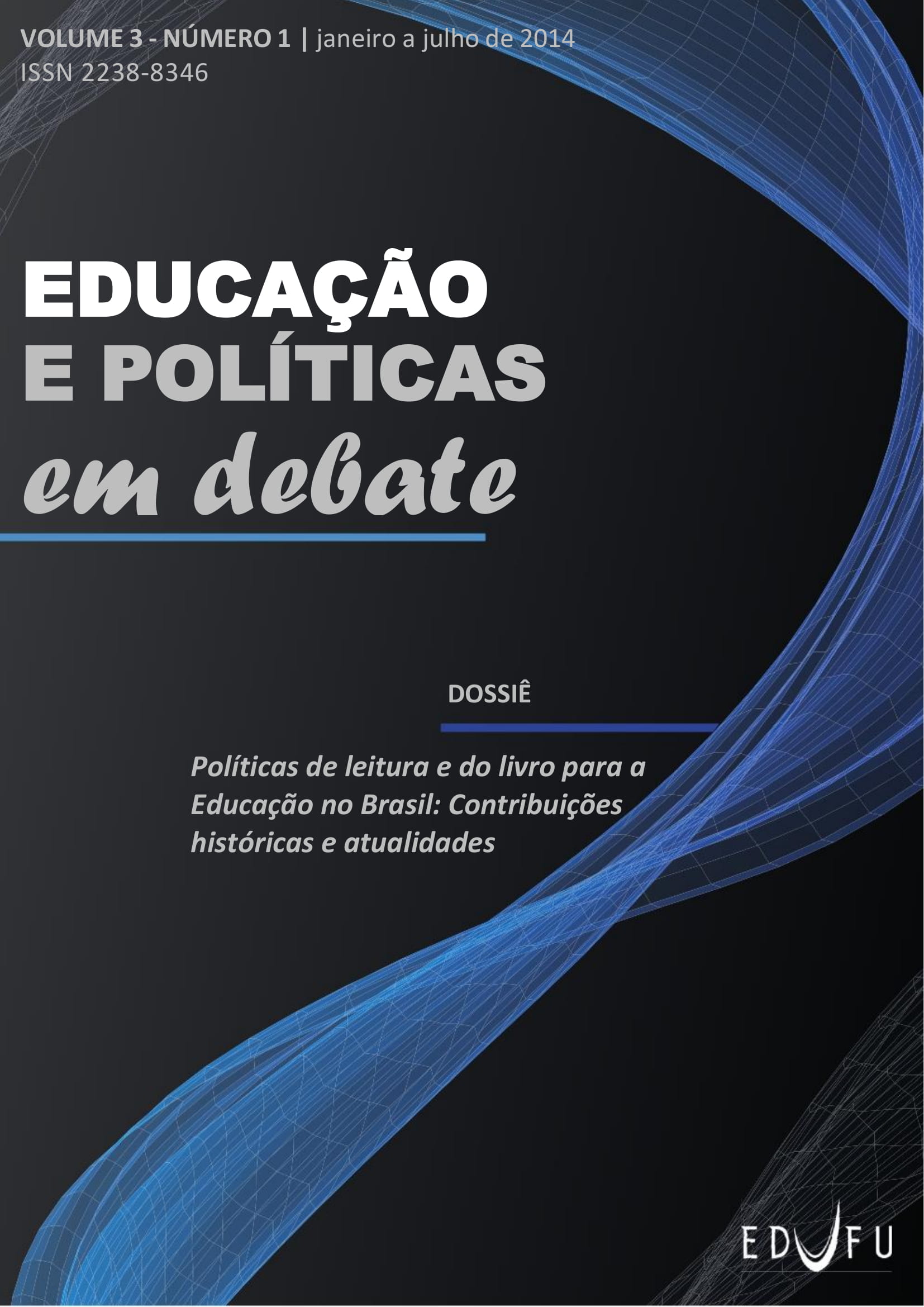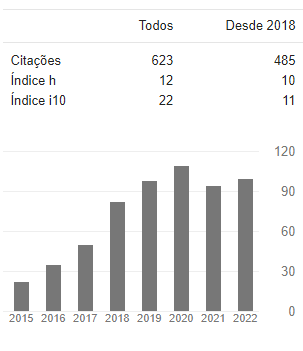EDUCAR NAS DIFERENÇAS POR UMA CULTURA PROSSOCIAL
DOI:
https://doi.org/10.14393/REPOD-v3n1a2014-27694Abstract
Este artigo, depois de uma breve descrição do conceito de "inclusão escolar" e do "comportamento prossocial", visa oferecer importantes pontos de reflexão sobre o valor pedagógico e formativo dessas dimensões. Através de um excursus desde os anos de 1960 até hoje, o artigo se propõe a expor os benefícios da inclusão escolar, destacando como em classes "heterogêneas", especialmente naquelas em que há a presença de alunos com deficiência, é possível melhorar as competências relacionais entre os colegas de classe. Em particular, faz-se referência ao estudo recente realizado em Roma, na Itália, e na cidade de Uberlândia, no Estado de Minas Gerais, no Brasil (Lombardi, 2011). Entre os adolescentes brasileiros da cidade de Uberlândia, o grupo experimental registra valores significativos (P 0.008), ou seja, esse resultado confirmaria a hipótese de que os alunos que tiveram colegas com deficiência em classe se percebem mais prossociais e, especialmente, com maior frequência, em comportamentos de ajuda.References
ALPER, S.; RYNDAK, D.L. Educatng students with severe handicaps in regular classes. The Elementary School Journal, 92, 373-387. 1992.
BIMBI, L. Prefazio. In: FREIRE, P. La pedagogia degli oppressi. Trad. de L. Bimbi. Milano: Mondadori, 1971.
BRINKER, R. P.; THORPE, M. E. Integration of severely handicapped students and the proportion of IEP objectives achieved. Exceptional Children, 51, 168-175. 1986.
CAIADO, K. R. M. Aluno deficiente visual na escola: lembranças e depoimentos. Campinas: Autores Associados, 2003.
CANEVARO, A. (org.). L’integrazione scolastica degli alunni con disabilità. Trent’anni di inclusione nella scuola italiana. Trento: Erickson, 2007.
CANEVARO, A. La relazione di aiuto. Roma: Carrocci,1999.
CANEVARO, A. Le logiche del confine e del sentiero. Trento: Erickson, 2006.
CANEVARO, A. Pietre che affiorano. I mediatori efficaci in educazione con la “logica del domino”. Trento: Erickson, 2006.
CHRISTOPOULOS, F; RENZ, P. A critical examination of special education programs. Journal of special education, v. 3, p. 371-379, 1969.
COLE, D. A.; MEYER, L. H. Social integration and severe disabilities: A longitudinal analysis of child outcomes. Journal of Special Education, 25, 340-351. 1991.
DE ANNA, L. Aspetti normativi dell’inserimento sociale degli handicappati in Italia e all’estero. Roma: Tempinuovi, 1983.
DE ANNA, L. La scuola e i disabili. Roma: Edizioni L’Ed, 1991.
DE ANNA, L. Un enfant gravement handicapé à l’école. L’intégration dans le contexte italien. In: BELMONT, B.; VERILLON, A. Diversité et handicap à l’école. Paris: INRP et CTNERHI, 2003. p. 37-59.
VERILLON, A. Pedagogia speciale. Integrazione e inclusione, Roma: Carocci, 2014.
DE BENI, M. Educare all’altruismo. Trento: Erickson, 2000.
DOVIGO, F. Etnopedagogia. Milano: Franco Angeli, 2002.
DOWNING, J. E.; MORRISON, A. P.; BERECIN-RASCON, M. A. Including elementary school students with autism and intellectual impairments in their typical classrooms: Process and Outcomes. Developmental Disabilities Bulletin, 24, p. 20-45. 1996.
EISENBERG, N. Empathy-related responding and prosocial behaviour. Novartis Foundation Symposium, 278, 71-80, 2006.
FREIRE, P. La pedagogia degli oppressi. Trad. de Linda Bimbi. Torino: EGA, 2002.
FARIA DE MIRANDA, M. A construção do pensamento pedagógico em um quintal da globalização. Olhar de Professor, v. 9, n. 2, p. 239, 2000.
FARRELL, P. The impact of research on developments in inclusive education. International Journal of Inclusive Education, v. 4, p. 153-162, 2000.
FRYXELL, D.; KENNEDY, C. Placement along the continuum of services and its impact on students’ social relationships. Journal of the Association for Persons with Severe Handicaps, 20, 259-269, 1995.
GOLDSTEIN, A. S. The Insanity Defense. New Haven: Yale University Press, 1967.
GUSKIN, S. L.; SPICKER, H. H. Educational research in mental retardation. In: ELLIS, N. R.(Ed.). International review of research in mental retardation, v. 3, p. 217-278, 1968.
GARDOU, C. Diversità, vulnerabilità e handicap. Per una nuova cultura della disabilità. Trento: Erickson, 2006.
GARDOU, C. Le handicap au risque des cultures: Variations anthropologiques. Toulouse: Erès, 2010, p. 11.
GARDOU, C. La société inclusive, parlons-en! Il n'y a pas de vie minuscule, Toulouse: Erès, 2012.
IANES, D.; TORTELLO, M. Disturbi dell’apprendimento e differenze individuali. Trento: Erickson, 1999a.
IANES, D.; TORTELLO, M. Handicap e risorse per l’integrazione. Nuovi elementi di Qualità per una scuola inclusiva. Trento: Erickson, 1999b.
JANZEN, L., WILGOSH, L., MCDONALD, L. Experiences of classroom teachers integrating students with moderate and severe disabilities. Developmental Disabilities Bulletin, n. 23, p. 40-57. 1995.
KARAGIANNIS, A.; STAINBACK, W.; STAINBACK, S. Rationale for inclusive schooling. In: STAINBACK, S; STAINBACK, W. (Orgs.). Inclusion: A guide for educators. London: Paul H. Brookes, 1996, p. 3-16.
KATZ J.; MIRENDA P. Including Students with developments disabilities in General Education Classrooms: Social Benefits. International Journal of Special Education, v. 17, n.2, p. 211, 2002.
KAVALE, K. A.; FORNESS, S. R. History, Rhetoric, and Reality: Analysis of the Inclusion Debate. Remedial and Special Education, v. 5, p. 21-279, 2000.
KIRK, S. A. Research in Education. In: STEVENS, H. A.; HEBER, R. (orgs.). Mental Retardation. Chicago: University of Chicago Press, Mental, 1964.
KISHI, G. S., MEYER, L. H. What children report and remember: A six-year follow up of the effects of social contact between peers with and without disabilities. Journal of the Association for Persons with Severe Handicaps, 19, 277-289, 1994.
LANCIONI, G. Storie e dialoghi nell’anno europeo delle persone disabili. In: CANEVARO, A.; IANES, D. Diversabilità. Trento: Erickson, 2003, p. 201.
LOMBARDI, G. La scuola inclusiva come fattore di promozione del comportamento prosociale: uno sguardo trasversale tra il viaggio e la ricerca. Tese (Dottorato in Culture, Disabilità e Inclusione: Educazione e Formazione). Dipartimento di Scienze della Formazione per le Attività Motorie e dello Sport. Roma: Università degli Studi di Roma “Foro Italico”, 2011.
MILANI, L. Lettera ad una professoressa. FIRENZE: Libera Editrice Fiorentina, 1967.
NOCERA, S. Il diritto all’integrazione nella scuola dell’autonomia. Trento: Erickson, 2001.
OLTRE I CONFINI E LE BARRIERE: CULTURE, DISABILITÀ E INCLUSIONE IN UNA PROSPETTIVA PROSOCIALE, 1, 2011, FOGGIA. GARDOU, C. La scolarisation des enfants en situation de handicap: quels grands enjeux pour nos pays? Atti del Convegno Oltre i Confini e le Barriere: Culture, Disabilità e Inclusione in una Prospettiva Prosociale. Foggia: 2011.
PECK, C. A.; DONALDSON, J.; PEZZOLI, M. Some benefits nonhandicapped adolescents perceive for themselves from their social relationships with peers who have severe handicaps. Journal of the Association for Persons with Severe Handicaps, v. 15, n. 4, p. 241-249, 1990.
PELTIER, G. L. The effect of inclusion on non-disabled children: A review of the research. Contemporary Education, 68, 234-238. 1997.
RICCI, C. Verso una teoria della prosocialità limitata. In: ROCHE, R. Prosocialità. Roma: Bulzoni Editore, 1997, p. 176.
RICCI, C. L’integrazione della persona con handicap grave. Handicap grave, v. 1, gennaio: Erickson, 2000.
RICCI, C. Valorizzare le differenze individuali. Trento: Erickson, Trento, 2005.
ROCHE, R. (Org.) La condotta prosociale. Basi teoriche e metodologiche d’intervento. Terapia del Comportamento, vol. monografico. Roma: Bulzoni, 1997.
ROCHE, R. Psicologia y Educación para la prosocialidad. Barcelona: Universitat Autònoma di Barcelona, 1995.
ROCHE, R. L’educazione alla prosocialità come ottimizzatrice della salute mentale e della qualità nelle relazioni sociali. Nuova Umanità, 1,121, p. 29-48,1999.
ROCHE, R. L’intelligenza prosociale. Imparare a comprendere e comunicare i sentimenti e le emozioni. Trento: Erickson. 2002.
SAFFORD, P. L.; SAFFORD, E. J. Visions of the special class. Remedial and Special Education, 19, 229-238, 1998.
SANTOS, M. P. Inclusion and/or Integration: The debate is still on in Brazil. Disability & Society, v. 16, n. 6, p. 893-897, 2001.
SILVA, M. V. Enfoque do negro no currículo escolar: algumas possibilidades de ressignificação. In: SILVA, M. V.; CUNHA, M. D. (Orgs.). Políticas e práticas docentes: alternativas em construção. Uberlândia: EDUFU, 2004, p. 65-77.
SPAVIER, A. Educare tra le diversità: i processi inclusivi del bambino immigrato con disabilità nella Scuola Primaria. Tese (Dottorato in Culture, Disabilità e Inclusione: Educazione e Formazione). Dipartimento di Scienze della Formazione per le Attività Motorie e dello Sport. Roma: Università degli Studi di Roma “Foro Italico”, 2013, p. 130.
STAUB, D.; SCHWARTZ, I. S.; GALLUCCI, C.; PECK, C. A. Four portraits of friendship at an inclusive school. Journal of the Association for Persons with Severe Handicaps, 19, p. 314-325. 1994.
TORTELLO, M. Integrazione degli handicappati. Brescia, Editrice La Scuola, 1996.
VIANELLO, R. Fare scuola nelle classi integrate. In: IANES, D.; TORTELLO, M. (orgs.). La qualità dell’integrazione scolastica. Trento: Erickson, 1999, p. 51-57.
VIZZIELLO, G. F.; BET, M.; SANDONA, G. How classmates interact with an autistic child in a mainstream class. European Journal of Special Needs Education, 9, p. 246-260. 1994.
Downloads
Published
Issue
Section
License
Copyright (c) 2022 Revista Educação e Políticas em Debate

This work is licensed under a Creative Commons Attribution-NonCommercial-NoDerivatives 4.0 International License.

































